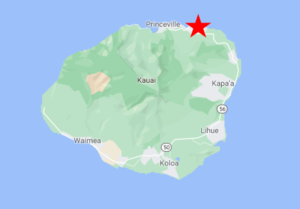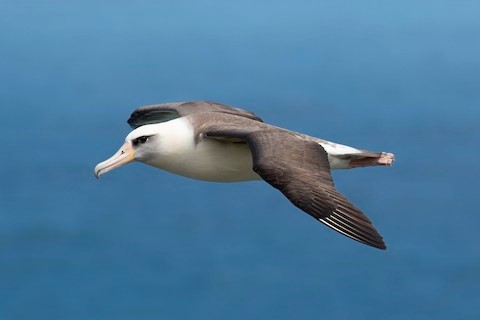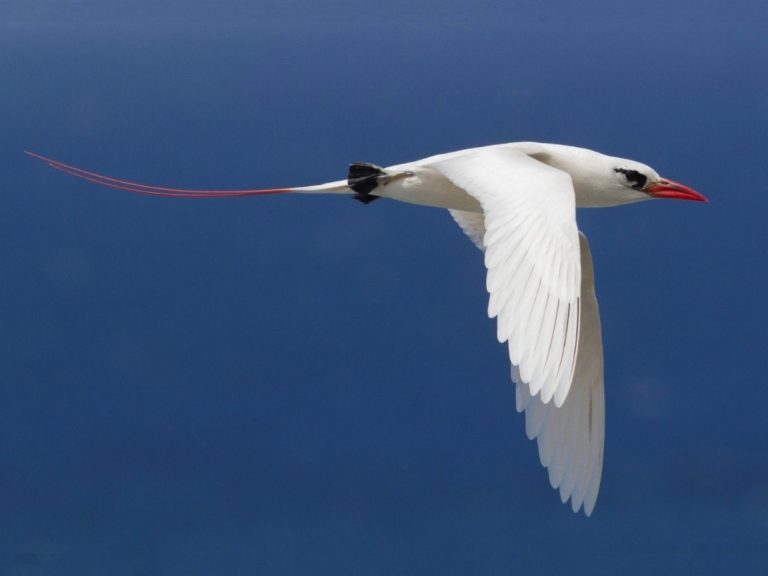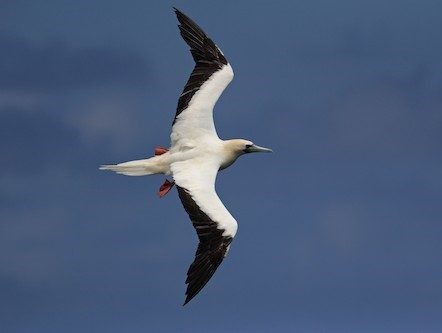Kilauea Point National Wildlife Refuge, Kauai, Hawaii

Kilauea Point is one of the most readily observable seabird colonies in the U.S., with nesting Yellow-billed Tropicbird, Red-tailed Tropicbird, Laysan Albatross, Wedge-tailed Shearwater, and Red-footed Booby. Hawaiian Goose also nests in the refuge and ongoing efforts to translocate Hawaiian Petrel and Newell’s Shearwater have succeeded thus far, as the shearwater nests in small numbers and petrel sightings have increased. Other notable species that are always or often present include Great Frigatebird and Brown Booby, and Kermadec Petrel has occurred sporadically in recent years.
Orientation
Directions
Kilauea Point National Wildlife Refuge is on Kauai’s north shore in the town of Kilauea, along the Kuhio Highway (a.k.a. Highway 560), about 40 minutes’ drive (25 miles) from Lihue Airport.
Drive north on Kuhio Highway for approximately 23 miles to Kilauea, turn right on Kolo Road, then left on Kilauea Road and drive 2 miles to its end at the refuge entrance.

Daniel K. Inouye Kilauea Point Lighthouse, seen from the overlook. © Go Hawaii
Birdfinding
The northernmost projection of Kauai, Kilauea Point is the site of the historic Daniel K. Inouye Kilauea Point Lighthouse. In 1985, after lighthouse decommissioning, Kilauea Point was designated as a wildlife refuge to protect nesting seabirds.
By 2020 it had become the eighth most visited tourist attraction in Hawaii, receiving approximately 400,000 to 500,000 visitors annually. Monthly visitation peaks between December and April and ebbs lowest from September to November.
Public access is limited to the road and path to the lighthouse. Traditionally this area was open daily from 10:00 to 4:00, but during the pandemic emergency it has been limited to a few days per week. During times when entry is not allowed, the overlook remains open, which enables more distant and limited views of the colony and cove on the east side of the point.

Eye-to-eye with a Laysan Albatross at Kilauea Point. © Chris Burney
Reservations are required, and there is an entrance fee of $10/adult (ages 16+) but no charge for children (15 and under).

Local breeders:
Hawaiian Goose: about 100 pairs; year-round.
Yellow-billed Tropicbird: about 5 pairs; year-round.
Red-tailed Tropicbird: about 200 pairs; mostly February to October.
Laysan Albatross: about 100 pairs; November to July.
Hawaiian Petrel: translocation effort underway; no nests confirmed as of 2020; seen sporadically March to August.
Wedge-tailed Shearwater: 8,000 to 15,000 pairs, with dense concentrations near the lighthouse and on Crater Hill; March to November.
Newell’s Shearwater: translocation effort underway; about 10 pairs; April to October.
Red-footed Booby: 1,500 to 2,000 pairs nest in ironwood and Christmasberry trees on the windward slopes of Crater Hill; year-round.

Red-tailed Tropicbird at Kilauea Point. © Jacob Drucker

Red-footed Booby at Kilauea Point. © Ben Lagasse
Other birds of special interest:
Black-footed Albatross: sporadic November to May.
Kermadec Petrel: seen sporadically since 2011.
Great Frigatebird: present year-round.
Brown Booby: a few often roost on Moku’ae’ae, mostly March to September.
“Hawaiian Short-eared Owl”: uncommon in open areas, mainly Crater Hill.
Services
Accommodations
Moderately priced accommodations are available half an hour away in Lihue. A few minutes west of Kilauea, there are several pricey resorts in the immediate vicinity of Princeville:
Hale Makai Cottages, 4400 Oneone Road, 1-510-841-4474
Hanalei Bay Resort, 5380 Honoiki Road,1-877-344-0688
Hanalei Colony Resort, 5 7130 Kuhio Highway, 1-808-826-6235
Princeville Resort Kauai, 5520 Ka Haku Road
Pure Kauai, 5118 Iolani Place, 1-808-828-6570
The Westin Princeville Ocean Resort Villas, 3838 Wyllie Road, 1-808-827-8700
Notes
Hazards & Hassles
The refuge’s physical infrastructure, especially roads and parking areas, are insufficient for the high volume of visitors it often receives. Traffic and parking can be challenging, and prospective visitors should be alert to the possibility that access may be limited further over time—for example, possibly by requiring visitors to use a shuttle service.
Links